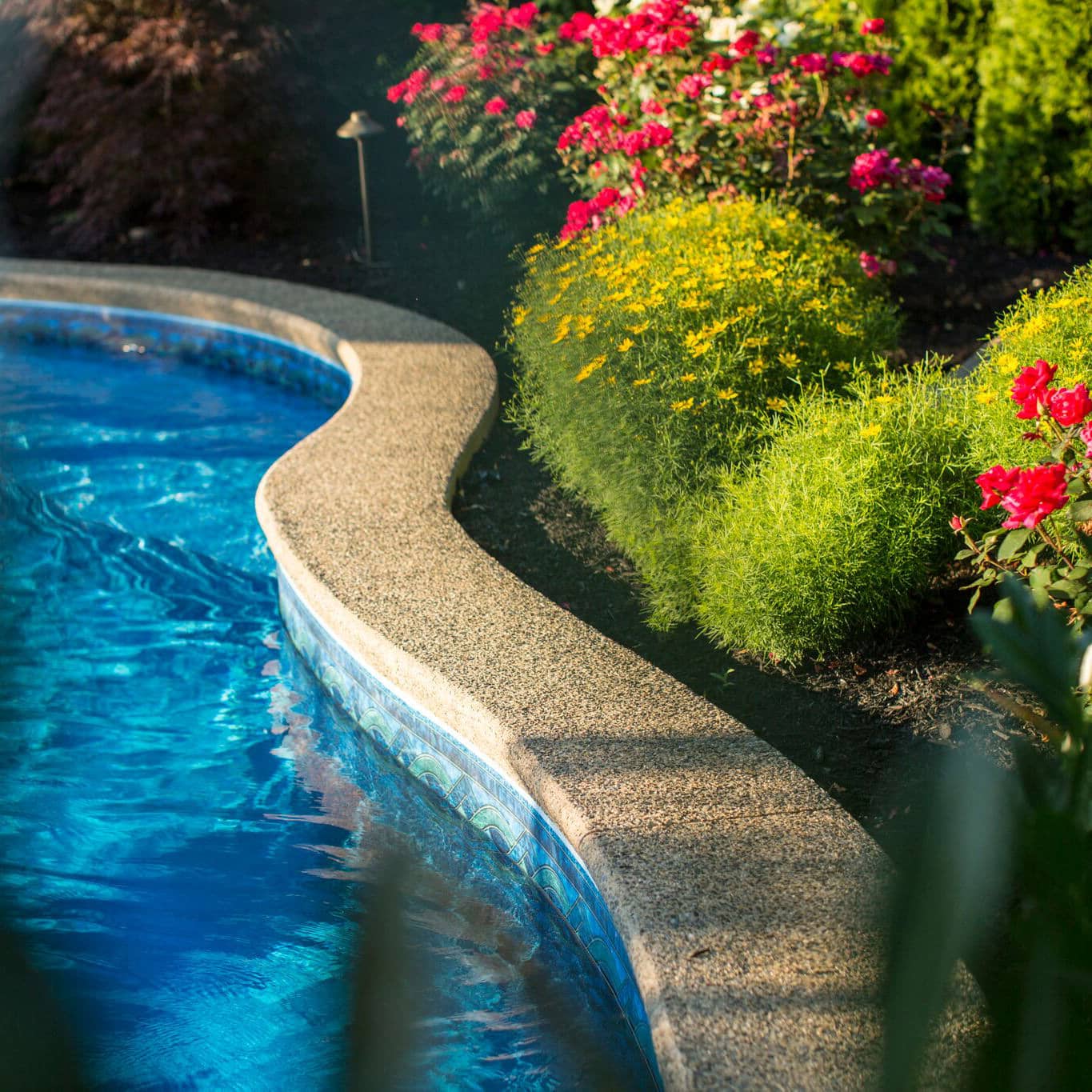Landscape Spotlight: Poison Ivy, ‘Toxicodendron radicans’
Posted May 31, 2018 in Plant and Tree
While MasterPLAN loves to write helpful and educational articles about the plants we love and how to implement them into landscape design, we also feel the need to toss in some useful blogs about plants that are not so desirable and tips/tricks to identify and avoid. Usually the Latin names of plants sound gentle and angelic, but that definitely is not the case for Toxicodendron radicans, commonly known as eastern poison ivy. We all are quite familiar with this poison vine or shrub, but do we really know anything about it other than knowing we need to avoid it?
Being a part of the cashew family, this North American native has been a known menace for centuries. The meaning behind its scientific name stems from both Latin and Greek influence. ‘Toxicum’ is Latin for poison, ‘dendron’ is Greek for tree and ‘radicans’ translates to spreading roots. You just can’t get any more literal than poison/tree/spreading roots, now can you? However, identifying this troublemaker may not be as simple. Poison ivy can range from a vertical vine that has the versatility to climb to 100 ft tall, lay low as a 2 ft tall ground cover or grow as an erect bush that stands 4 ft tall. Therefore, depending on its quick appearance alone will not aid in identification 100% of the time.
One thing we do know for sure that coming in contact with this seemingly unassuming plant causes that spreading red, bumpy, itchy and sometimes painful rash known as contact dermatitis! This reaction is caused by the urushiol oil of the plant, and insult to injury, this oil can stay active on any surface for up to 5 years! That’s right, you can actually get a poison ivy rash from objects like garden tools, fishing poles, hiking boots…etc. without even coming in contact with the plant in the future. If you do come in contact with poison ivy, you will notice the rash show up as early as 4 hours or as late as 48 hours.
So, where can you expect to find this plant? Ask anyone you know and chances are they will say it grows everywhere. Actually, they aren’t wrong! Poison ivy is indiscriminate on location and is not very picky about soil or light requirements. However, you will find poison ivy commonly growing in fields, woods, thickets, near fences for support, on the perimeter of hiking or hiking trails, and in areas that are commonly disturbed by foot traffic. This haphazard growing makes it the wildcard of the landscape, which is one reason tending to all areas of your property and not letting anything get overgrown or forgotten is key to keeping your property safe and poison ivy free!
Now, the moment you have all been waiting for, identification! As noted above, poison ivy can be a sort of shapeshifter, but there are some principle features to look for that can help in identification.
- Remember the old saying, “Leaves of three, let it be”, this is a simple yet helpful way to know that poison ivy consists of leaves in groups of three.
- Poison ivy leaves have pointed tips.
- In the spring, poison ivy flowers emerge in small light green clusters that mature into off-white flowers with an orangey-color at their center. These flowers will be a mix of both open and unopened blossoms on the plant. Poison ivy is also known to grow berries that transition from a pale green color to an off-white. These berries will last well into the fall.
- Older poison vines display roots that dangle down off of the stem in mid-air. This is important for those who innately like to swat at things…you know who you are.
- Poison ivy is not always green! The leaves start their young journey in the spring as red, transition to green in the summer and then round out to yellow, orange and red in the fall.
- The new leaves that appear in the summertime will still emerge red, just not as vibrant as they were in the spring. This is an auto-indicator of poison ivy.
- A common misconception is that all leaves of three are poison ivy, but that isn’t the case. If you care to get close enough to look, plants like Virginia Creeper look similar but have serrated-like edges and blueish-purple berries. Subtle nuances make the biggest difference in identification!
- Forest animals like deer are unaffected by urushiol oil, so keep in mind that not all plants are safe just because they are desired by wild animals.
Being armed with information is the first step in prevention, but you can also take extra precautions to ensure that intense rash doesn’t become a part of your summer routine. When you know you are going to be in wooded areas or going for a hike, try to wear a long-sleeved shirt and pants with close-toed shoes. When you get home, wash your clothes in hot water with your regular laundry detergent, but make sure the washing machine is not overloaded so the articles of clothing can agitate freely and loosing up all oils you may have come in contact with. You may also want to grab a scrub brush and scrub the shoes you wore with hot soapy water and let them air dry in a place with shade and open air.
If you think, or know, you have been in contact with poison ivy, the first thing you should do is clean the exposed skin suspected of contact. Clean your skin with rubbing alcohol then warm water. Then and only then you should take a hot and soapy shower or bath, and do it as soon as possible after contact with the plant. After 15 minutes of exposure, the oil can start to seep into your skin and start the skin reaction. Some people swear by using things like vinegar, mineral spirits, baking soda, tea tree oil…etc. to cleanse affected skin and get rid of the oil or treat an early rash. I suppose this might be a trial and error to find what works best for your own skin treatment.
Hopefully we have shed some light on this pesky poison which will assist your identification and avoidance in the future! When you feel that you have a good handle on what is and is not poison ivy, take this identification quiz to see how well you do…it will show you how disguised surrounding plants can really be!
Being raised in a garden center, having an innate knowledge of all plants and armed with an education in architectural drafting and engineering gives MasterPLAN Founder and Lead Designer Joshua Gillow a strong comprehensive background in all facets of outdoor living. Being able to combine expertise with creativity and outside the box solutions is what gives MasterPLAN Outdoor Living its conviction and unique style. We aim to partner with our clients to create beautiful and functional outdoor living spaces by integrating structure and landscape for an outdoor experience they are sure to love. For those living in the Poconos, Lehigh Valley through the Main Line of Philadelphia and western New Jersey who would like to discover the true potential of their property, reach out to us at MasterPLAN, we would love to welcome you into the family!
Join Our Newsletter
Stay up to date with what is happening with MasterPLAN Outdoor Living.

If you don’t see the value in a built-in fire feature, a fire table can accomplish the same ambiance and enjoyment for a fraction of the cost. Invest that money saved into a feature your family will use all the time!

This Bethlehem outdoor living space is complete with a custom gunite pool and adjacent overflow spa which receives full sun in the summer...the kids can't wait to make a splash!!

This lovely couple from Bethlehem feel like they are on vacation everyday in their own MasterPLAN created backyard!

The iridescent tile selected for this overflow spa and swimming pool keeps the tile cool during the hot days of summer and beautifully shifts in color as the sun rises and sets!

This Macungie landscape design provides the perfect balance for this professional couple and their young family…

Have you ever seen fiber optics incorporated into a concrete bar top?! Check out this amazing and custom MasterPLAN feature…

An outdoor kitchen/bar can include as little or as many features as you’d like! Our discovery process will hone in on what makes the most sense for your family, home and lifestyle.

This outdoor living space in Fogelsville includes several zones for different activities, yet they all blend together in this beautiful master plan!






